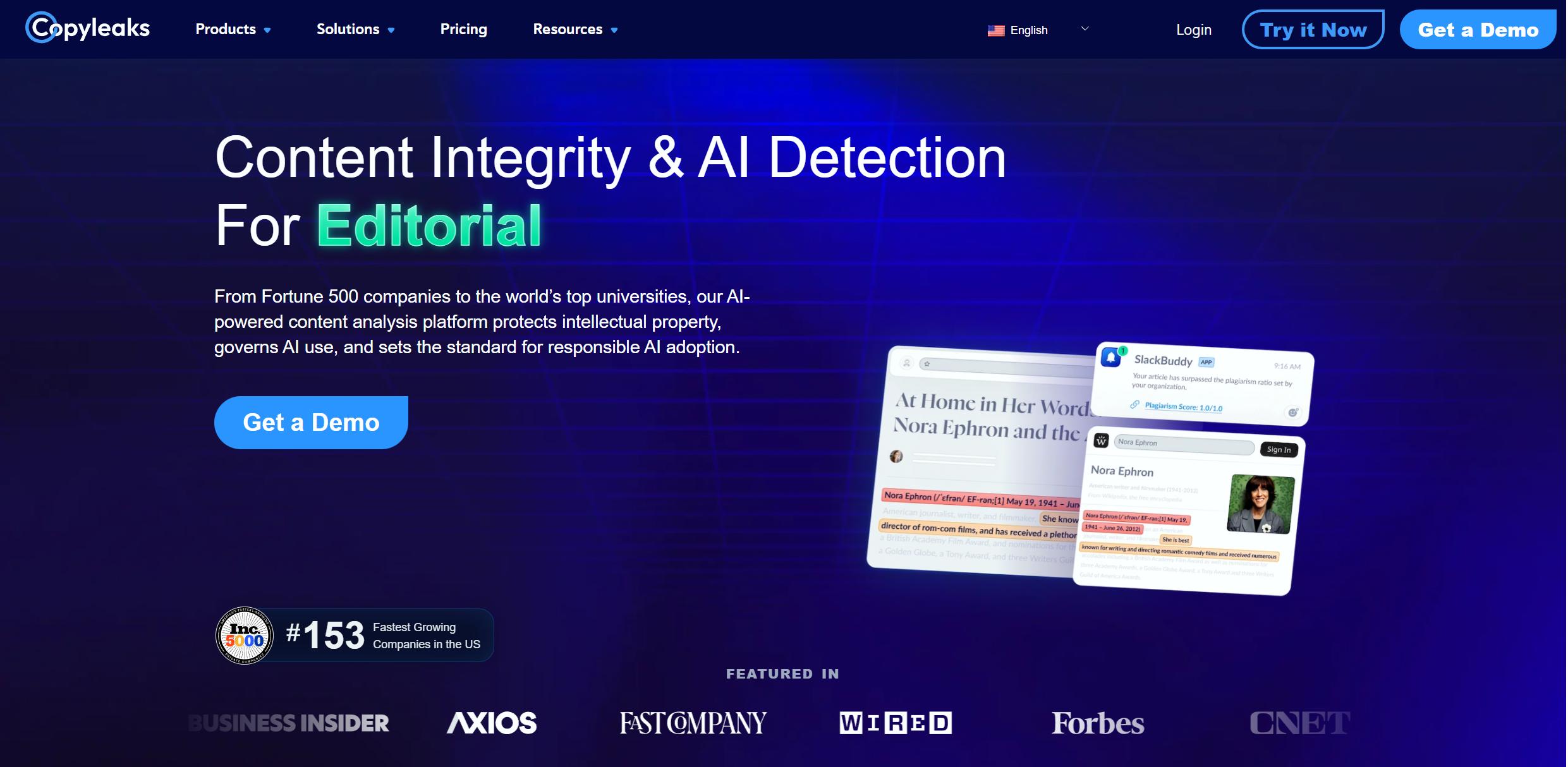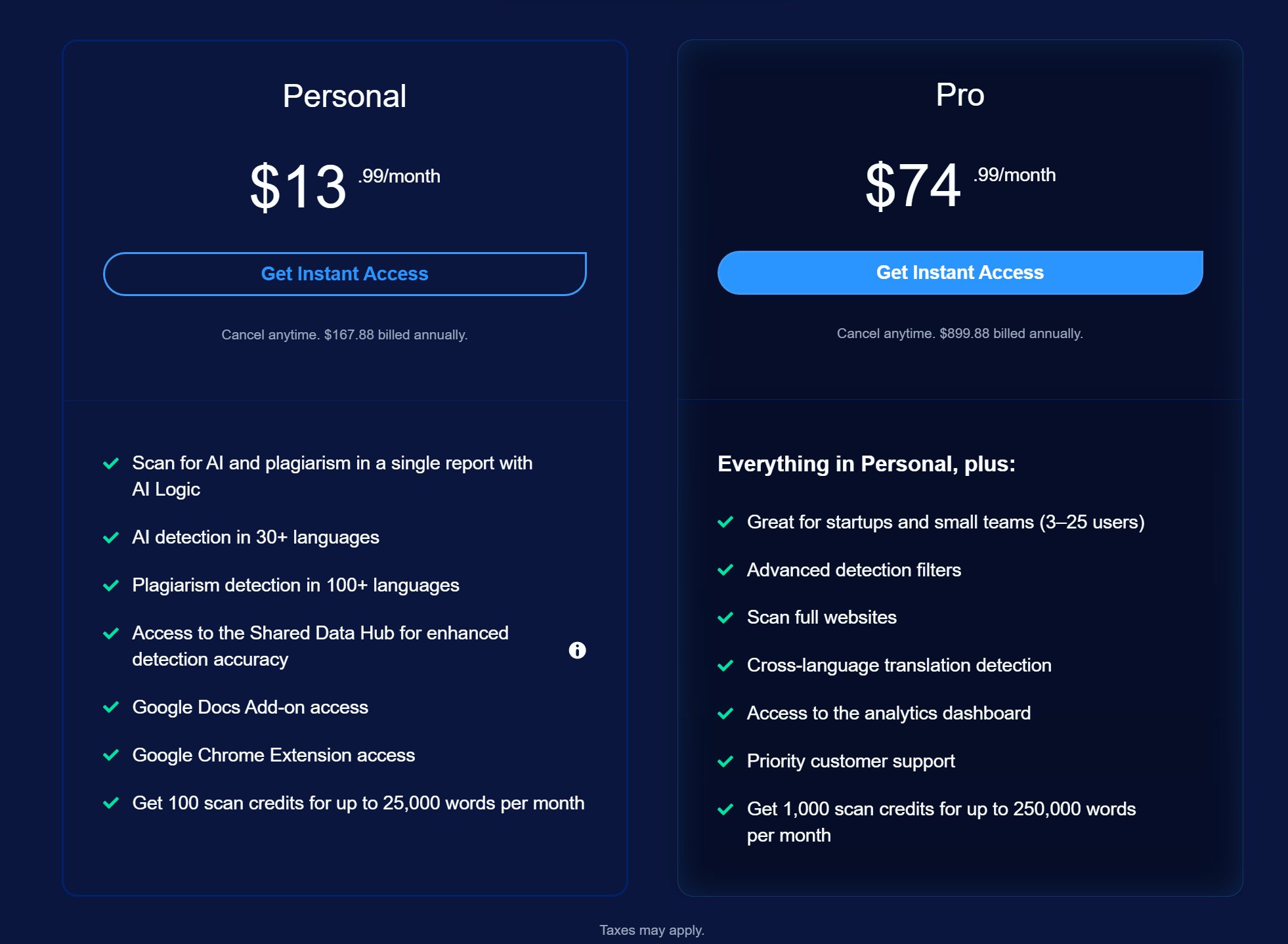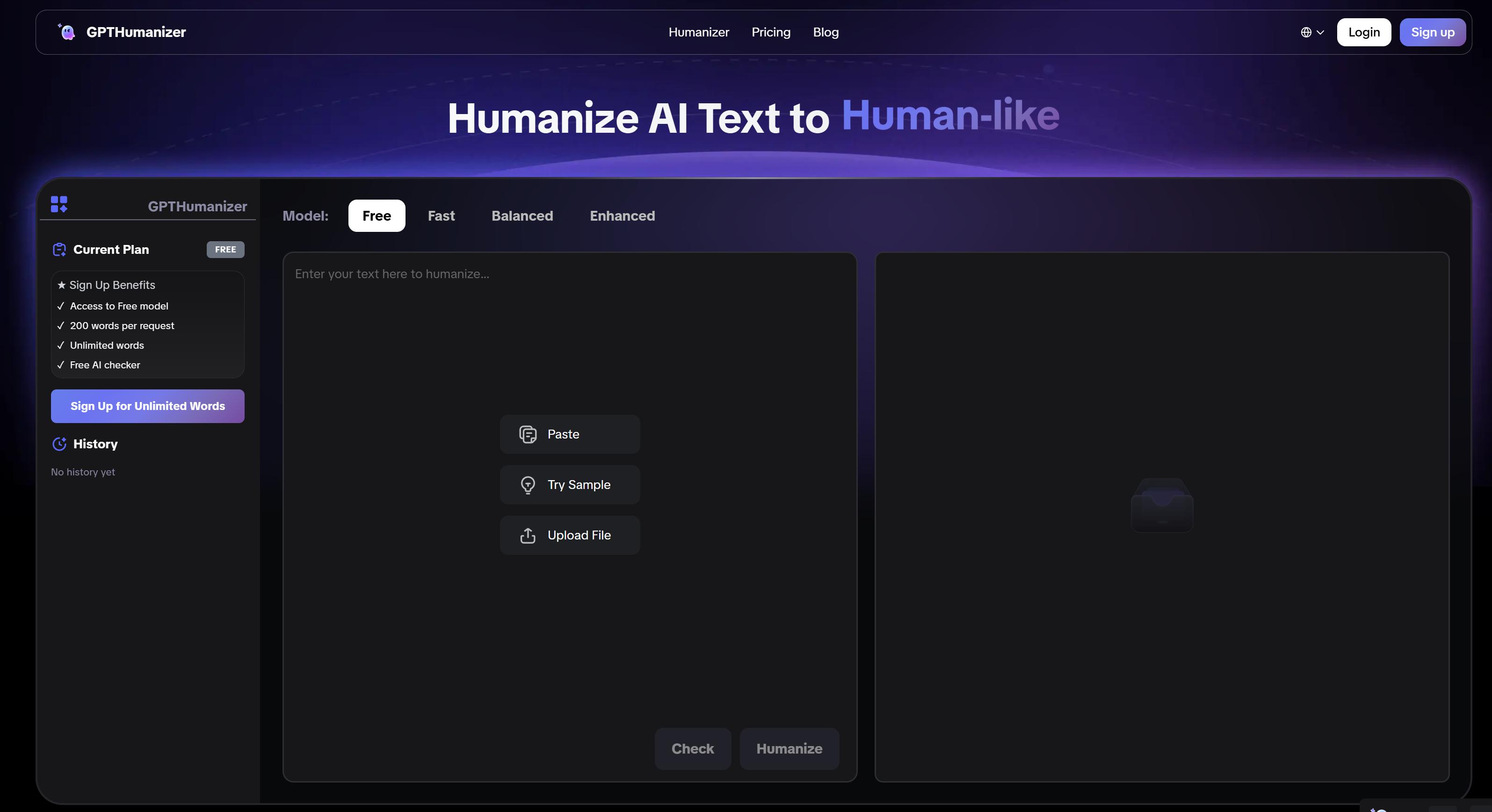Copyleaks Review 2025: AI Detection Tool Worth Your Money?
Summary
In a world where machine-generated content is becoming ever more sophisticated and sophisticated, it is more important than ever to detect whether text is AI-generated or written by a human. Educational institutions, the publishing industry and content creators are in search of tools that can detect the authenticity of content while being able to detect AI generated content. Copyleak was one of the most popular tools to come forward. It offers an AI detection tool along with a plagiarism detection tool. But does it live up to the hype? Are there better tools out there? In this review we will explore Copyleaks' features and test it in real-world usage. Tools like GPTHumanizer may offer a more strategic approach to ensuring the authenticity of content.
What is Copyleaks?

Copyleak is an AI content detection tool which also offers plagiarism detection. The company was founded as a plagiarism detection tool. It later expanded its offer to include AI content detection when demand for this service started to increase. Copyleaks offers its services to educational institutions, businesses, publishers and individual content creators who want to ensure the authenticity of their content.
Copyleak functions in 100+ languages and offers different ways to use the tool, such as in Google Docs, as a chrome extension, through LMS or an enterprise API. It offers everything a user needs to ensure the authenticity of content in an age where AI generated text is becoming more prevalent.
Who uses Copyleaks?
Copyleaks has a diverse user base who have varying needs for their content verification. The largest user base for Copylecks are educational institutions such as schools. Teachers and school administrators use Copyleak to check student work for both AI generated content and plagiarism. With the ability to integrate into different LMS's, it is easy to use in many educational institutions.
The publishing industry uses Copyleacks to ensure that their published content meets authenticity guidelines. This includes content publishers and marketing agencies. This is increasingly important as search engines start to flag AI generated content. Lawyers use Copyleaks for document verification of legal briefs and research as this is a vital part of ensuring that the information they rely upon is authentic. Lastly, individual content creators such as bloggers, content creators and freelance content writers use Copyleaks to ensure that their content will not be flagged as AI content as a way of ensuring authenticity.
Core Features Deep Dive
Copyleaks offers detection of a number of different types of content, making it more advanced than many plagiarism detection tools.
The AI Content Detection feature of Copylecks uses machine learning models trained to detect the types of text generated by AI from different models including GPT, Claude and Gemini. The detection is not simply based on patterns but goes into analysing the style of writing, structure of sentences and content flow.
The Traditional Plagiarism Detection scans content against billions of web pages, academic research papers and published books and papers. The service has a high level of accuracy and where matches are found it provides attribution and source details.
Copyleak offers multi-language support which means it can detect AI content in 100+ languages. This is important for organisations and content creators that work internationally and publish content in multiple languages. Copyleaks offers the same level of accuracy across multiple different languages.
Enterprises can integrate the API into their workflows and platforms. It offers the ability to do bulk processing and adjust the sensitivity of the detection.
Product test results (evidence from independent sources)
But does it really work? Instead of lab tests you can’t reproduce, we reference public evaluations:
● Academic study (Sweden/English news). In AI-Wolf in Sheep’s Clothing (2024), Copyleaks scored ~95% correct on Swedish tests, and 100% correct on English tests in that study (and didn't give false positives on English). Promising - but the analysis is specific to that domain and task.
● Bloomberg/press testing & campus guidance. Media and university writing about detectors says they do not always work. They say one test had 1–2% false positives in pre-AI essays in Bloomberg (not that high, but matters for academia). The MIT teaching material says detectors "are not foolproof".
● Hands-on tech reviews. Consumer tests (e.g., Tom’s Guide) show performance depends on both the detector and the test sample, and GPTZero was best in one mixed test (some AI, some humaned text), while they got the "humaned" text wrong in other tests, some of which included Copyleaks. This is to be expected in this cat-and-mouse game.
Copyleak is proven to good performance in some independent analyses, and is battle-tested in education and publishing environments. But, like all detectors, it will not catch everything. Short text, text that is overly humaned or edited will still get through with almost zero detection. Treat the score as a direction or a signal, not a verdict.
Pricing analysis

Copyleaks sells its tools as packages that combine AI detection and plagiarism detection, with plans tailored for individuals or teams. Pricing is subscription-based, and credits represent word counts (≈250 words per credit).
Subscription Plans
Personal Plan – $13.99/month ($167.88 annually)
● AI + plagiarism detection in a single report (AI Logic)
● AI detection in 30+ languages
● Plagiarism detection in 100+ languages
● Shared Data Hub access for improved detection accuracy
● Google Docs Add-on and Chrome Extension
● 100 scan credits per month (≈25,000 words)
Pro Plan – $74.99/month ($899.88 annually)
● Everything in Personal, plus:Designed for startups and small teams (3–25 users)
● Advanced detection filters
● Scan entire websites
● Cross-language translation detection
● Analytics dashboard access
● Priority customer support
● 1,000 scan credits per month (≈250,000 words)
Copyleak Pricing Context & Advice
● The Personal plan is designed for individual users who need consistent but moderate scanning capacity.
● The Pro plan targets teams, adding collaboration features, reporting, and 10× the scanning volume.
● Estimate your typical word volume per month before committing — credits scale directly with usage.
● For education, journalism, and regulated sectors, the analytics and reporting features in Pro justify the higher price.
● If you are working solo, start with Personal and upgrade later as your needs grow.
● A 14-day free trial helps test before committing.
Pros and Cons Summary
Pros
● Dual coverage: AI detection and plagiarism (including paraphrase/cross-language + code).
● Integrations and API make it easy to scale without duct tape.
● Reports encourage human judgment instead of single-score tunnel vision.
Cons
● No detector is perfect; short or aggressively humanized text can slip by—or get over-flagged.
● Credit systems require planning; otherwise you hit limits mid-deadline.
● Some users over-trust the number. Policy and training matter.
GPTHumanizer: a thoughtful alternative for polishing

It’s important to clarify that GPTHumanizer has no direct connection to Copyleaks. The two tools serve very different purposes: Copyleak focuses on detection (AI content + plagiarism), while GPTHumanizer takes an alternative approach — rewriting AI-generated text to make it sound more natural and human-like.
In other words, if Copyleaks is a defensive tool designed to spot AI-written content, GPTHumanizer is more of an offensive tool that helps creators refine AI drafts into publish-ready text. Its goal is not to replace detection but to give content creators a practical way to make AI-assisted writing clearer, smoother, and less robotic.
Where GPTHumanizer shines
● Marketing teams polishing blog posts, newsletters, or customer support copy.
● Solo creators seeking a faster path from rough AI drafts to polished, publishable content.
● Batch clean-ups where consistency of style matters more than strict originality.
Ultimately, GPTHumanizer is best seen as a style and quality enhancer rather than a “detector evader.” It’s inexpensive, fast, and practical — but your responsibility as a creator remains clarity and honesty, not gaming detection systems.
Conclusion
Copyleaks offers reliable AI and plagiarism detection with strong accuracy, integrations, and multi-language support, making it ideal for schools, publishers, and enterprises. Its downside is the credit-based pricing, which can feel costly for individual users.
GPTHumanizer takes a different approach — not detection, but humanizing AI drafts so they read more naturally. For creators and marketers, this often feels more practical than constantly worrying about detection scores.
Both approaches have value, but they solve different problems. In practice, many professionals may even find themselves using both: detection tools to ensure compliance, and humanization tools to refine quality and style.
Frequently Asked Questions (FAQ)
Q: How accurate is Copyleaks at detecting AI-generated content? A: Based on our testing, Copyleaks shows approximately 87-89% accuracy in detecting AI-generated content, with performance varying based on the AI model used and content type.
Q: Can Copyleaks detect content from all AI models? A: Copyleaks can detect content from major AI models including ChatGPT, Claude, Gemini, and others, though newer or less common models may present detection challenges.
Q: Is there a free version of Copyleaks available? A: Copyleaks offers a 14-day free trial with limited credits, but does not provide a permanently free tier for regular use.
Q: What file formats does Copyleaks support? A: Copyleaks supports various file formats including Word documents, PDFs, text files, and can analyze web content directly through URLs.
Q: Can paraphrasing tools fool Copyleaks detection?
A: Basic paraphrasing tools may reduce detection accuracy by 30-50%, but sophisticated humanization tools like GPTHumanizer are more effective at creating natural-sounding content that avoids detection.
Q: Is Copyleaks suitable for academic use?
A: Yes, Copyleak integrates well with educational platforms and is widely used by academic institutions, though the pricing may be prohibitive for individual educators.
Q: Can copyleaks check code?
A: Yes—source-code plagiarism/AI-generated code checks are part of the package.
